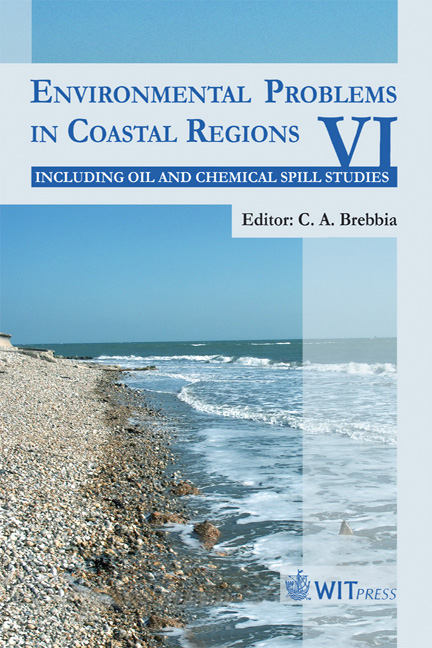Imaging Spectroscopy And Integrated Coastal Zone Management: A Promising Marriage
Price
Free (open access)
Transaction
Volume
88
Pages
13
Published
2006
Size
1,339 kb
Paper DOI
10.2495/CENV060311
Copyright
WIT Press
Author(s)
B. Deronde, S. Sterckx, L. Bertels, E. Knaeps & P. Kempeneers
Abstract
This paper provides an overview of the coastal and marine applications which make use of Imaging Spectroscopy (IS), recently under development in Vito. It should be considered as a concise overview rather than an in depth presentation of one application or development. The first two applications focus on sediment mapping; firstly, a classification of sediment habitat types of the Molenplaat, a tidal sand bank in the Westerschelde, is presented. By means of feature selection and a supervised binary classification approach the sediment is classified according to its grain size, moisture content, organic matter content and chlorophyll-a concentration. The second application uses airborne IS to classify the different sand types present along the Belgian coast, in combination with airborne laserscanning to derive accurate erosion maps. The combination of both data products results in a method which proves to be very suited to monitoring the sand transport processes along the Belgian coast. Afterwards two aquatic applications are presented; in the first, coral reef communities in Indonesia are classified. Extensive field work served to collect a spectral library which is used to classify the coral reef communities in as much detail and as accurately as possible. The second aquatic application addresses the difficult challenge of quantifying the amount of suspended sediment and chlorophyll-a in water and rivers; this is performed by inversion of a bio-optical model using a set of Specific Inherent Optical Properties (SIOP’s) measured in-situ. Many marine applications ask for some specific processing steps which are inherent to the aquatic environment. Therefore the last study in this overview focuses on the atmospheric correction above water bodies. Due to the high absorption and transmission of water bodies the reflected radiation level is low compared to land. To extract this small signal from a much greater base of other radiance a very accurate atmospheric correction algorithm is required. Therefore a specific atmospheric correction algorithm, WATCOR, has been developed to account for the marine atmospheric conditions as well as for the air-water interface.
Keywords





